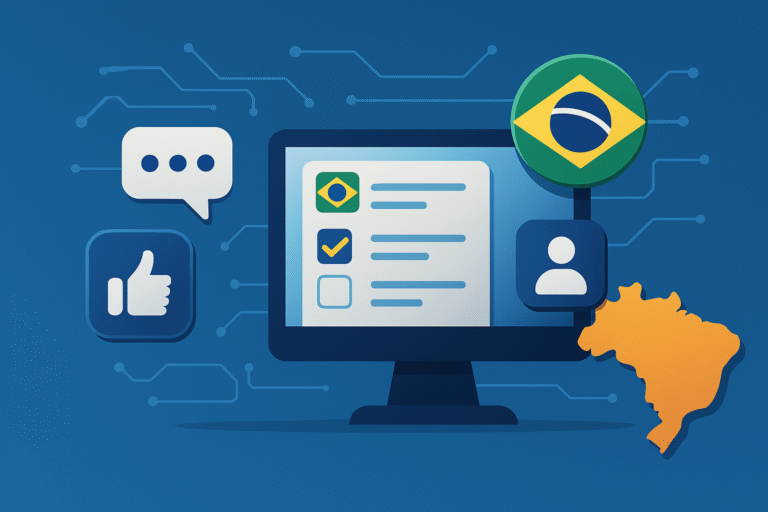
Introduction
Participatory budgeting (PB) is one of the most important democratic innovations of the past three decades. First introduced in Porto Alegre, Brazil in 1989, PB allows citizens to decide directly how to allocate part of a public budget. According to the World Bank, the practice has now spread to more than 11,000 cities in over 70 countries.
Beyond symbolism, PB delivers measurable results: higher citizen engagement, improved equity, and cost efficiency compared to traditional top-down decision-making. This article explores key international cases and compares their impact, efficiency, and transparency.
1. Porto Alegre, Brazil: the birthplace of PB
The first PB process in Porto Alegre allocated about $17 million annually to citizen-selected projects. At its peak in the 1990s and 2000s:
- Between 20,000 and 50,000 residents participated annually (3–5% of the city’s population).
- Assemblies voted on priorities such as sanitation, housing, and education.
- PB projects were found to have lower costs per unit because communities monitored implementation.
Studies cited by the International Observatory on Participatory Democracy (OIDP) show that PB in Porto Alegre expanded access to clean water and reduced child mortality in poorer districts.
2. Paris: scaling up PB in a global capital
Since 2014, Paris’ Participatory Budget has become one of the largest in the world:
- Allocation: about 5% of the city’s annual budget (~€100 million per year).
- Participation: more than 500,000 Parisians have voted at least once.
- Participation rates: 7–10% of eligible residents, higher than offline-only consultations.
The digital platform used in Paris significantly reduces administrative costs and allows real-time publication of results. Citizens choose projects related to green spaces, schools, and mobility.
3. Portugal: the world’s first national PB
Portugal pioneered the National Participatory Budget (Orçamento Participativo Portugal) in 2017:
- Annual budget: about €30 million.
- Participation: around 100,000 votes per year (1% of the electorate).
- Projects funded: environment, culture, education, innovation.
Although participation levels are lower than in municipal cases, Portugal shows that digital democracy tools can expand PB to a national scale.
4. New York City: participatory budgeting in a diverse metropolis
New York launched PB in 2011 in just four districts. By 2019, the PB Project reports:
- 100,000 residents voted across 31 council districts.
- Budget: $39 million allocated.
- Projects: schools, libraries, housing improvements.
Surveys show that PB participants in New York are often from low-income or minority groups, highlighting its potential for equity and inclusion.
5. Seoul, South Korea: advanced digital PB
The city of Seoul has developed a sophisticated hybrid PB system:
- Annual allocation: ~50 billion won (~$42 million).
- Participation: over 100,000 residents annually.
- Digital integration: proposals and votes processed through the city’s e-government platform.
The efficiency gains are notable: lower per-vote cost, transparent publication, and high scalability.
6. Kerala, India: grassroots mobilization
Kerala’s “People’s Plan Campaign” in the 1990s allocated 35–40% of the state’s development budget through PB:
- Millions of residents participated in thousands of village assemblies.
- Focus: education, health, and infrastructure.
- Challenges: high administrative costs, but very high civic mobilization.
Kerala demonstrates the potential of PB to mobilize large populations, even without advanced digital platforms.
7. Offline vs. Digital PB: efficiency comparison
| Parameter | Offline PB | Digital / Hybrid PB |
|---|---|---|
| Participation rate | 1–3% of residents | 5–15% of residents |
| Cost per participant | High (venues, staff) | Low (platform maintenance) |
| Speed of counting | Days or weeks | Real-time |
| Transparency | Meeting minutes only | Open data, blockchain-ready |
| Inclusiveness | Limited to attendees | Wider demographic reach |
👉 For more on technology in democratic processes, see our article on Blockchain and Transparent Voting.
8. Costs, efficiency, and trust
- Digital PB reduces administrative costs by 30–40% compared to paper-based methods.
- Platform development: $100,000–500,000, but marginal costs per participant are very low.
- Trust: surveys in Paris and New York show that 70%+ of participants feel more confident in institutions after participating.
- Equity: PB often directs resources to disadvantaged neighborhoods, improving fairness.
✅ Conclusion
From Porto Alegre to Paris, Seoul, New York, and Kerala, participatory budgeting has become a global democratic innovation. Data show that PB increases citizen participation, lowers costs when using digital platforms, and enhances transparency and trust.
👉 For citizens and institutions alike, PB represents a practical path toward collaborative democracy. The future lies in hybrid models, integrating digital platforms, blockchain, and secure digital IDs to make participation even more inclusive, efficient, and transparent.
📚 Sources and External Links
- World Bank – Participatory Budgeting
- OIDP – International Observatory on Participatory Democracy
- Decidim – Open Source Platform
- City of Paris – Participatory Budget
- Participatory Budgeting Project – New York
- Government of Portugal – National PB
- Seoul Metropolitan Government – PB
- Kerala People’s Plan Campaign
- Concorder


